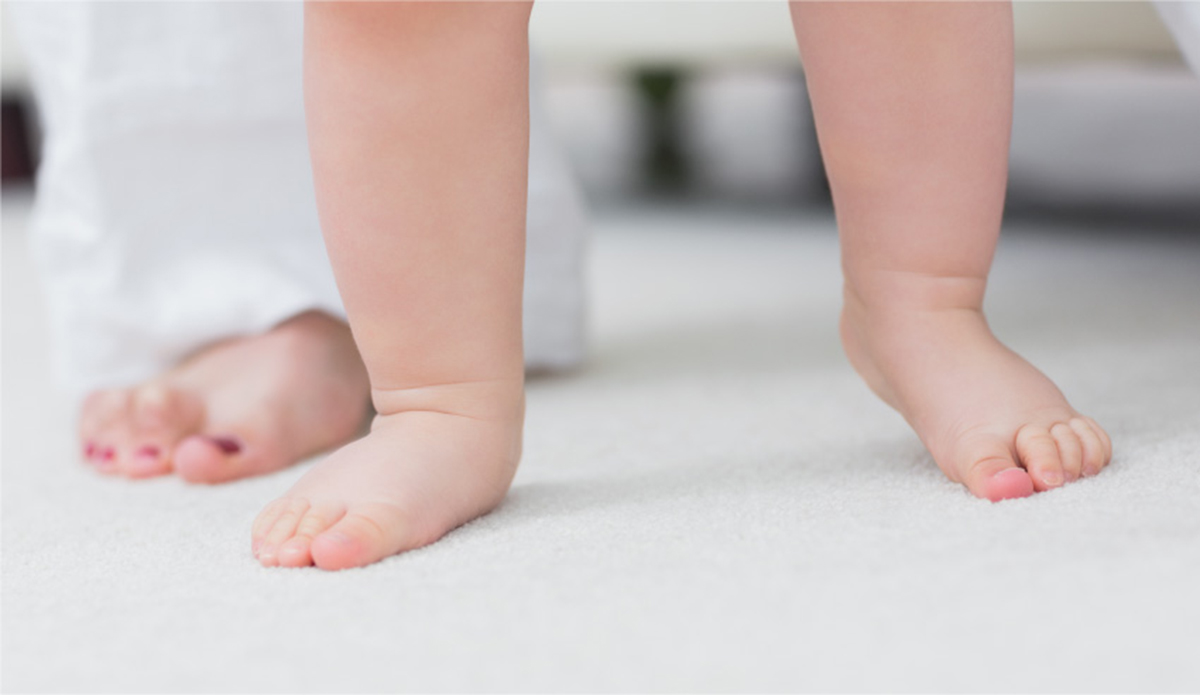Soft and pliable bones typically result in bow legs, a disorder that can make walking harder for toddlers. Besides rickets, bow legs are often caused by Blount’s disease. Contrary to the popular belief that overuse of a baby walker can cause bow legs, it’s not true.

What causes rickets in children?
Because calcium and phosphate are crucial elements of a bone, if the availability of calcium is for some reason diminished, phosphate levels are disturbed as well [2]. If a child’s calcium intake is limited, supplementing with Vitamin D alone might not help in prevention or treatment of rickets. [3]
Studies have found that many people in Sweden, especially adolescents, are often vitamin D deficient, even during the summer months. This is why most Scandinavians take vitamin D supplements on a daily basis. [5, 6]
Breast milk and Vitamin D
Vitamin D content in the breast milk depends on maternal vitamin D status and in most cases it’s quite low, unless the mother is taking supplements. According to studies, breast milk provides <25 IU/L to 78 IU/L, which is quite low.
Infants' requirements for vitamin D can't usually be met by breast milk alone. The American Association of Pediatricians recommends supplementing your baby’s diet with 400 international units (IU) of vitamin D per day beginning in the first two months after a child is born.
Studies suggest that supplementing with vitamin D prevents rickets, but more research on this is needed. [7, 8] In most of Europe, supplementing starts two weeks after birth. The U. S. and Canada mandate that all infant formulas are fortified with vitamin D: 40–100 IU/100 kcal in the U. S. and 40–80 IU/100 kcal in Canada. [9]
There's a rule of thumb that vitamin D supplements should be taken only in those months that contain the letter "R“. It makes sense because all the months without this letter are spring and summer months, when there's enough sunlight outside, but when it comes to children and their health, do nothing on your own and always check the facts with your pediatrician.
Natural sources of vitamin D
Vitamin D can be a hormone synthesized from the skin after sun exposure, and also a nutrient that we eat — they can’t be distinguished chemically. When it comes to vitamin D as a nutrient, it can be obtained from dietary sources such as eggs, cod liver and other oily fish, vitamin D fortified foods such as margarine or dairy products, and some cereals. [11]
Both ergocalciferol (vitamin D2) and cholecalciferol (D3) are dietary supplements. The main difference is that D2 is obtained from plant sources (such as fungi), and vitamin D3 originates from animal sources such as lanolin (sheep's wool).
Rickets does cause delays
Rickets is mainly characterized by malformation of the bones, bone pain, and delayed walking. In a group of 42 non-walking toddlers, the delay in walking was caused by rickets in 60 percent of children in the group. [1]
If your child is healthy and doesn't walk, do not worry — some children are naturally lazier and uninterested in moving around. Avoid using a baby walker as it is proven to delay walking, contrary to the common belief that it may speed up the process. [12]
A study conducted on children under two years in Finland concluded that tripling the dose of vitamin D (1200 IU) can't increase bone strength any better than the standard dose. [13] It's best to follow your pediatrician's guidelines on how much vitamin D to give, because they're specific for the region where you live, the period of a year, and of course — your child's needs.
- Photo courtesy of SteadyHealth.com


Your thoughts on this